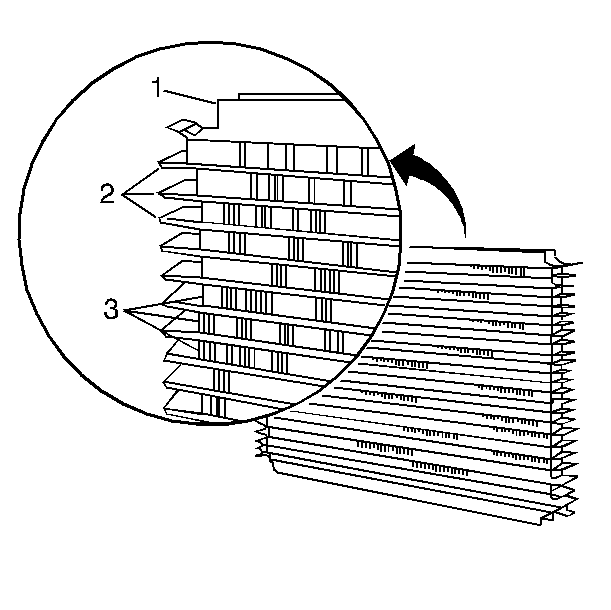Cross-Flow Radiator Core and Outlet and Inlet Tanks

These models have an aluminum, cross-flow design core (1). The core uses a stack of horizontal tubes (2) that resist plugging. The cooling fins (3) surround these tubes. The top and bottom ribs strengthen the assembly. The saw-cut in each strengthening rib allows for expansion during temperature changes.
The inlet and the outlet tanks are molded from high-temperature, nylon reinforced plastic. A high-temperature rubber gasket seals the tank flange around the edge. The inlet and the outlet tanks are clamped to the right side and the left side of the core with clinch tabs. These tabs are part of the aluminum header at each end of the core. Radiators used with automatic transmissions have transmission oil coolers with inlet and outlet fittings for transmission fluid circulation.
You can identify an aluminum-plastic radiator by the black plastic side tanks and an aluminum radiator core.
Transmission Oil Cooler
All vehicles have an oil-to-coolant transmission oil cooler within the right-hand radiator end tank. This is an integral part of the radiator and should not be serviced separately. Some vehicles have an additional oil-to-air transmission oil cooler, located in front and to the right of the radiator. This oil cooler is replaceable.
Engine Oil Cooler
There is an optional engine oil cooler in the radiator's left-hand inlet tank. The engine oil cooler pipes connect the radiator to the engine block through an adapter located between the oil filter and the engine block. This system circulates the engine oil through the radiator at all times.
Radiator Drain Cock
The radiator drain cock is on the bottom, left side of the radiator end tank. The drain cock includes the drain cock and the drain cock seal. Use the drain cock when you drain the coolant.
